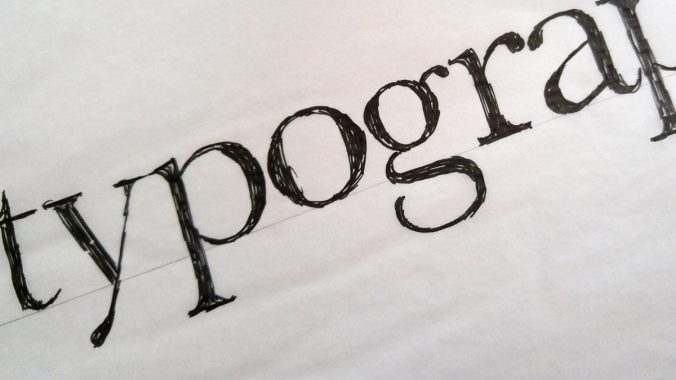Wed, Feb 1, 2017
Let’s review some of the things we learned during our second session:
Introduction to the Five Families of Type
Old Style – Garamond
Transitional – Baskerville
Modern – Bodoni
Egyptian or Slab Serif – Century Expanded
Sans Serif – Helvetica
You need to become very familiar with these families/categories and the characteristics of each.
Download lecture slides
Typographical Anatomy – This document was handed out in class, but if you need a new copy, you may download it. You will need to know these parts as the semester progresses, so you should study this sheet and refer to it often.
During class as we became familiar with the different characteristics between the 5 families of type, some terms were introduced. Make sure you know these and begin using them in your typography references:
- leading – refers to the linespace between the lines of type. The term originated in the days of metal type. During hand-typesetting, thin strips of lead were inserted into the lines of type to increase the distance.
- sans serif – a typeface that does not have serifs. Make sure you know what serifs are.
- font – one weight, width or style of a typeface.
- typeface – the letters, numbers and symbols that make up a design of type. A typeface is part of a type family of coordinated designs. For example, Helvetica Bold is the typeface and is a part of the Helvetica family of type (Helvetica is the type family, Helvetica Bold is the typeface).
- type family – the full collection of typefaces that were designed together and intended to be used together. For example, Garamond font family consists of roman, italics, semi bold, and bold weights. Combined together, these make up the Garamond type family.
- scribes – they were responsible for writing books by hand before the invention of the printing press. They were usually monks who lived in monasteries.
Homework – Due Monday 2/6/17
- Reading Assignment in textbook: pages 36-55. Also, complete the first reading assignment if you haven’t done so already, pages 10-35.
- Please bring your tracing pads and pens and other materials for class.




Leave a Reply